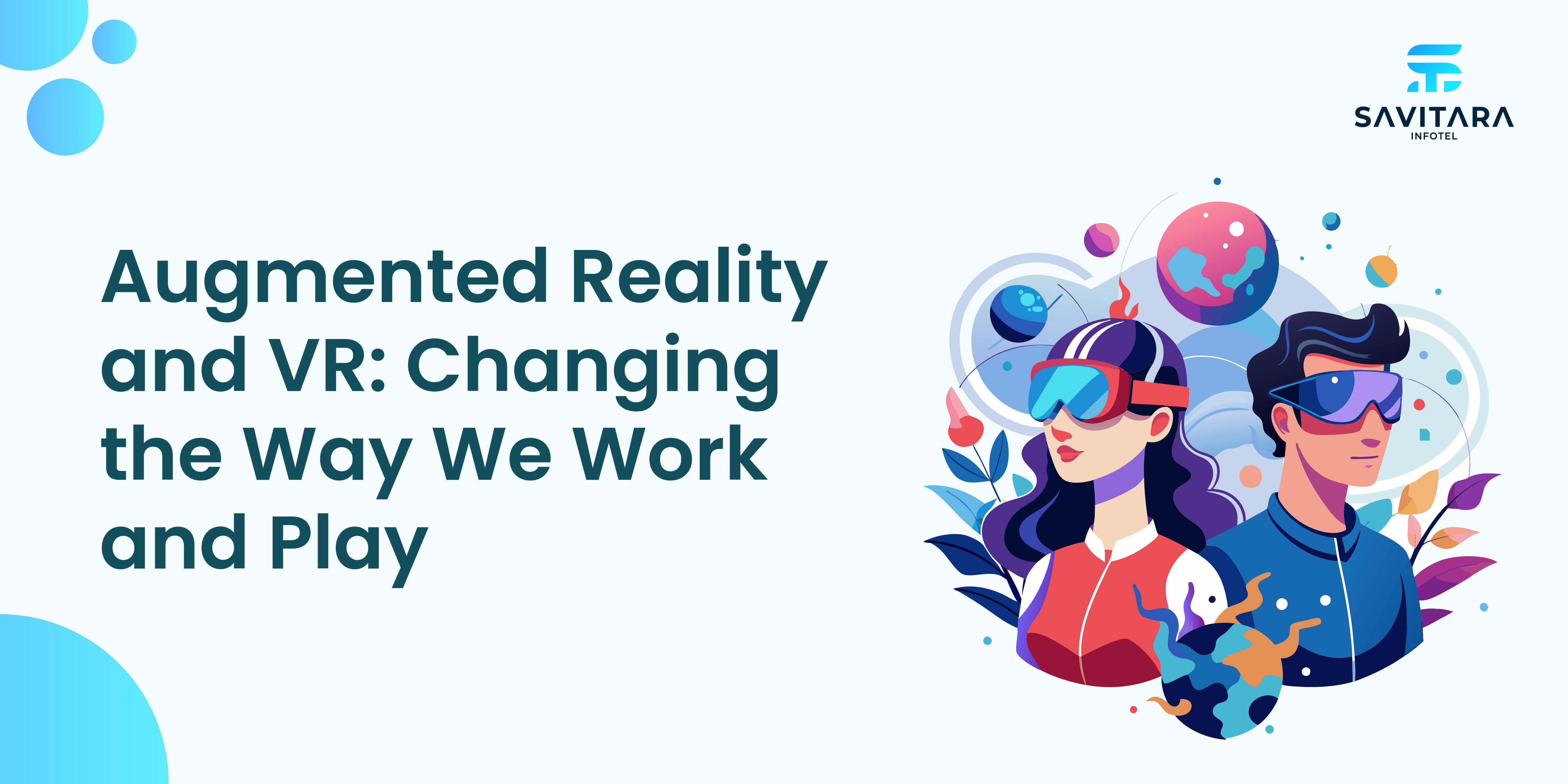Augmented Reality and VR: Changing the Way We Work and Play
Introduction
Virtual reality (VR) and augmented reality (AR) are at the forefront of innovation in a time of rapid technology boom, converting our reviews in each professional and amusement contexts. AR modifies the physical worldwide through superimposing digital information, while VR transports customers into absolutely virtualized settings. When mixed, those technologies have the capacity to absolutely change how we interact with our environment.
The Development of AR and VR
The improvement of AR and VR started with simple simulation and visualisation efforts in the middle of the 20th century. The first head-mounted shows were advanced within the Sixties, commencing the door for further improvements. The improvement of processing energy, graphics rendering, and consumer interface design over the years has taken these technologies from specialised uses to not unusual occurrences.
Early Developments and Key Events
A predominant turning factor changed into reach within the Nineties whilst digital truth (VR) have become popular in gaming and army training. Simultaneously, augmented reality (AR) discovered use in domain names like engineering and design, where the capacity to superimpose digital blueprints onto tangible things yielded crucial insights.
Key Technological Developments
AR and VR have turned out to be extra widely available due to current improvements which encompass higher sensors, higher photographs engines, and much less highly-priced technology. The recognition of augmented truth (AR) applications has been dramatically pushed via the introduction of smartphones with state-of-the-art cameras and computing strength.
AR and VR in the Workplace
With the help of immersive training environments provided by AR and VR, workers may hone their abilities in realistic situations without facing repercussions in the real world. In high-stakes fields like healthcare and aviation in particular, experiential learning promotes retention and skill acquisition.
Improving Cooperation and Interaction
Geographical boundaries are being overcome by virtual meetings and collaborative workplaces made possible by virtual reality. Virtual settings allow teams to come together and create a feeling of presence that increases engagement and productivity.
Streamlining Processes and Operations
AR applications offer real-time data overlays that help with difficult assembly operations in industries like manufacturing, greatly decreasing mistakes and increasing productivity. This smooth transition between reality and technology is demonstrated by the incorporation of digital tools into physical operations.
Transformative Impact on Industries
AR and VR are revolutionising surgical techniques and patient relations in the healthcare industry. While augmented reality (AR) applications give real-time data during treatments, improving precision and results, surgeons may rehearse complex operations in virtual settings.
Immersion Learning Experiences in Education
Institutions of higher learning are using AR and VR to develop interactive programs. Beyond the confines of the typical classroom, students may enhance their learning experiences by travelling to far-off places, conducting virtual science experiments, or investigating historical events.
Retail: Developing Engaging Storescapes
AR is being used by the retail industry to improve consumer experiences. By enabling customers to see items in their own settings, virtual fitting rooms and interactive displays help close the gap between online and in-store buying.
AR & VR Entertainment Games
The rise in popularity of AR and VR has through and huge been fueled through the gaming employer. In a manner that conventional gaming mediums are not able to, those technologies immerse gamers in intricately realistic environments, encouraging interplay and emotional engagement.
Cinema and Storytelling: Innovative Narrative Aspects
Filmmakers are experimenting with VR's ability to tell immersive stories that captivate audiences in previously unheard-of ways. This change blurs the boundaries between creator and consumer by enabling audiences to actively participate in tales. Social Exchanges in Digital Environments
Social Media and Virtual Communities
Social relationships are changing as a result of AR and VR, which allow people to connect in virtual spaces. Virtual community and belonging are fostered via platforms that let users communicate through avatars, even when they are not physically present.
Effect on Relationships and Human Connection
Virtual encounters can increase connectedness, but they also make people consider the nature of relationships. The difficulty is striking a balance between genuine in-person relationships and internet interaction.
Obstacles and Restrictions
Technical Difficulties: Software and Hardware Limitations
AR and VR are promising, but there are technological limitations. Widespread acceptance and usefulness may be hampered by high prices, constrained hardware capabilities, and the requirement for complex software.
Data security and privacy are ethical considerations
The big use of AR and VR offers essential ethical issues, in particular with reference to facts protection and privacy. Safeguarding personal facts will become important as customers interact with these immersive settings.
Future Directions for VR and AR
Forecasts for Technological Development
AR and VR are going to increase exponentially in the future. Improved haptic feedback, easier-to-use user interfaces, and even more integration with artificial intelligence are anticipated developments that will further obfuscate the distinction between simulation and reality.
Possible Shifts in Society Caused by AR and VR
These technologies will surely affect society norms and behaviours as they become increasingly ingrained in daily life. The move to virtual connections might reshape ideas about leisure, labour, and community.
Conclusion
Virtual reality (VR) and augmented reality (AR) constitute more than contemporary-day technology; they mark a significant transformation in how we recognize and engage with our surroundings. As these enhancements preserve conformity, they hold the potential to virtually redefine our opinions in every painting and play, encouraging us to include risks and find out new possibilities in our non-public and professional lives. Adapting to this shift can be critical for navigating a destiny in which immersive reports form our everyday lives.
Savitara Infotel plays a pivotal role in this transformation by offering specialised AR and VR advertising services. Based in Ahmedabad, they leverage these technologies to create engaging marketing campaigns that captivate audiences and enhance brand experiences. Additionally, Savitara Infotel provides comprehensive online marketing solutions, helping businesses effectively reach their target markets in an increasingly digital landscape. Embracing their expertise can empower businesses to thrive in this new era of immersive engagement.

